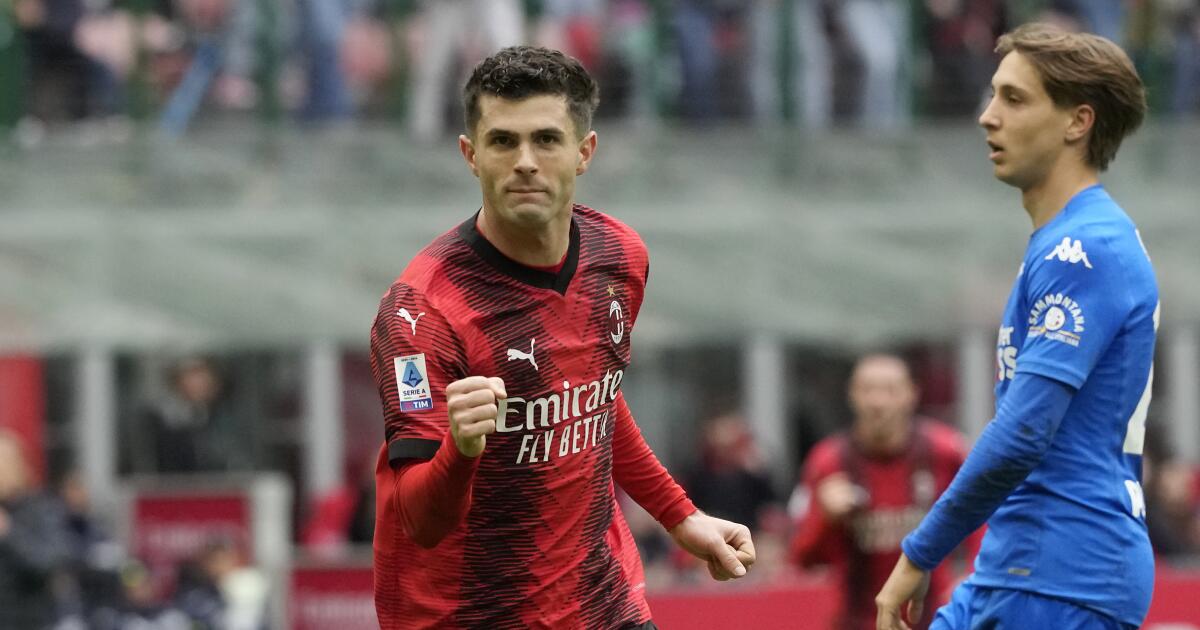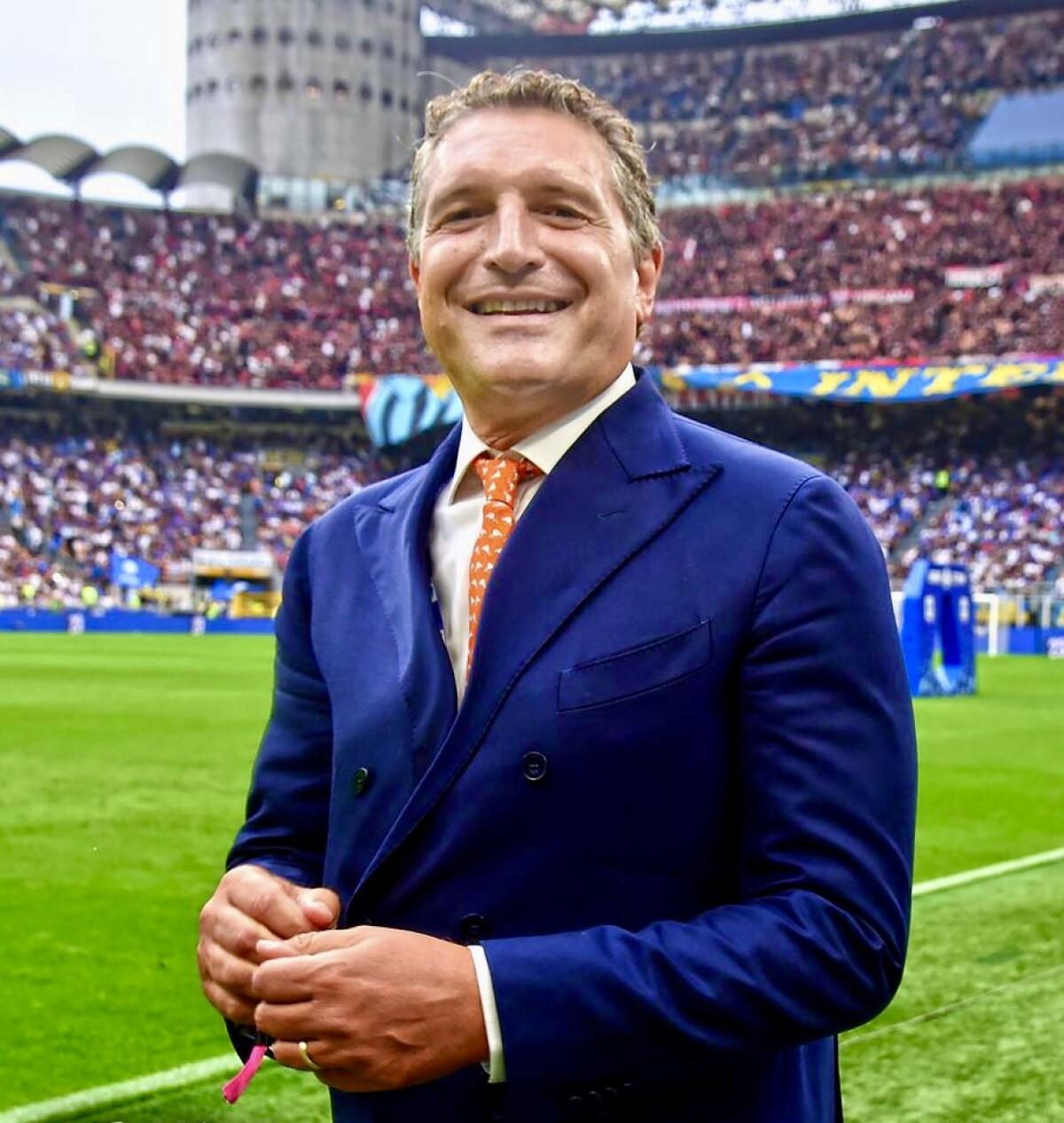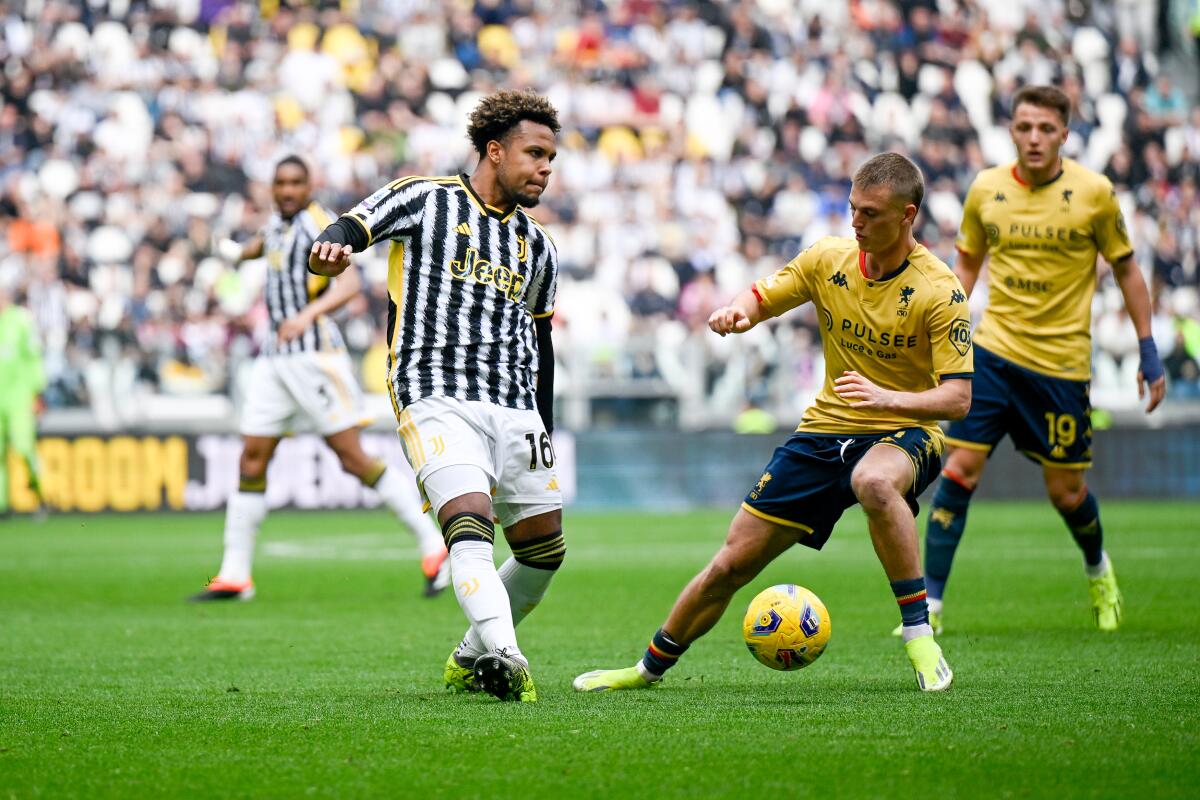
How American players are fueling a Serie A soccer renaissance
If the U.S. makes a deep run in the next World Cup — or even in this summer’s Copa América — Italy might deserve part of the credit.
Since 2022, a record 10 Americans have played in Italy; six of them were on the 23-man roster for last week’s CONCACAF Nations League final. And five of the 20 teams in Italy’s top-tier Serie A have American owners.
For Luigi De Siervo, the league’s chief executive, that’s a relationship that favors both sides.
“It’s not a coincidence,” he said. “Italian clubs are closely watching the development of soccer in the U.S.”
For the Italians, it has been a financial boon. Since Serie A followed the German Bundesliga and Spain’s La Liga by opening a business office in New York two years ago, De Siervo says the league has seen “exponential” growth in its U.S. fan base, growth he credits to the presence of so many U.S. players in Italy.

Luigi De Siervo, chief executive of the Italian soccer league, Serie A.
(Serie A)
For the U.S., meanwhile, having players in key roles in the league UEFA says is now the strongest in Europe is making the national team better. USMNT captain Christian Pulisic has a career-high 12 goals in 40 games in all competition for second-place AC Milan while Weston McKennie leads third-place Juventus with nine assists.
“Pulisic literally changed the way AC Milan plays,” Luca Bianchin, a sports writer with La Gazzetta dello Sport in Milan, wrote in an email interview. “For sure he is one of the best newcomers in the league. But also McKennie established himself as a starter for Juventus. Yunus Musah [AC Milan] and Timothy Weah [Juventus] are useful role players too.”
The growing synergy between U.S. and Italian soccer extends beyond the playing field to the executives suites. A quarter of the Serie A teams — Atalanta, Fiorentina, Genoa, AC Milan and Roma — have American owners, who are valued as much for their capital as for their experience in turning the game-day experience, both inside and outside the stadium, into something special.
In addition, Bologna has a Canadian owner, and Serie B sides Parma and Venezia, who both have U.S. owners, are likely to be promoted to the top flight next season, swelling the North American influence.
“The primary attraction for American ownership is, first and foremost, sporting,” De Siervo said. “After all, we are at the top of European football. [But] acquiring an Italian club also means becoming stewards of the great passion of our fans, a passion that represents the distinctive trait of our country and therefore of the excellence ‘made in Italy’ represents.”
A generation ago, Serie A was what the English Premier League is now: the richest, most popular league in the world. In the 1980s and ‘90s it was home to players such as Diego Maradona, Roberto Baggio, Zinedine Zidane, Marco van Basten and Lothar Matthaus. It had the most money and the most challenging competition, which is why its teams won Europe’s top club competition five times and finished second four times between 1985 and 1996.
No other league was even close. And the national team benefited. Of the seven World Cup finals between 1982 and 2006, Italy played in three of them, winning two and losing on penalty kicks in the other.
But the level of spending that made that possible couldn’t be sustained. In the summer of 2002, Fiorentina went into administration because of huge debts its owners couldn’t repay and six months later, the Cirio group, a majority shareholder in Lazio, defaulted on its loans. A year after that, Parmalat, the main backers of Parma, collapsed and in 2004, Napoli was declared bankrupt.
The final nail in the coffin came two years later when executives with five teams were accused of communicating with refereeing authorities to have specific referees officiate their respective fixtures.
Serie A was pretty much done.
Then last spring, as Italy prepared to send teams to the finals of Europe’s three main club competitions — the Champions League, Europa League and Conference League — Serie A launched a new campaign, “Calcio is Back,” built around the Italian word for soccer.
“From a sporting perspective, we can legitimately say that our slogan is even more relevant today,” De Siervo said.
Now the league is looking to continue that momentum.

Weston McKennie of Juventus is challenged by Genoa’s Albert Gudmundsso during a Serie A match on March 17.
(Daniele Badolato / Juventus FC via Getty Images)
“Where we need to improve concerns our stadium infrastructure,” he said. “A modern stadium not only allows for increased match-day revenues, but also ensures more engaging television broadcasts. Sport is entertainment in every sense. And this is the point where investments from American owners and their experience in creating modern stadiums will help us.”
Thirteen of the league’s 20 teams play in stadiums that opened before 1967; seven date to before World War II. That makes this season’s average attendance — which was 30,757 entering last weekend, the best league-wide mark since the halcyon days of 1998-99 — even more remarkable.
Bringing Serie A’s infrastructure into the 21st century could boost broadcast revenues as well. In October, the league agreed to a domestic TV deal with DAZN and Sky worth $4.8 billion over the next five seasons, but that’s about half of what the Premier League will earn from its most recent domestic broadcast contract, which runs just four seasons. The Bundesliga and La Liga also outearn Serie A, getting more than $1 billion a season for the broadcast rights to their games.
“The influence is growing,” Bianchin, the Milan journalist, said of American ownership. “However you have to consider that laws and political and cultural habits make it very difficult to reform Serie A and change the habits of our football.
“I am curious to see what is going to change in the next five years. The use of data is a good example. Some American owners use data massively and I am sure this will persuade at least part of the Italian owners to have data analysts and change their vision on sabermetrics.”
Not all the recent news has been good, though. Last fall another controversy engulfed Italian soccer when more than 40 players, including some in Serie A, were linked to an illegal gambling scandal, leading to fines, multiple-month bans and conjuring up memories of the league’s fall from grace.
So is calcio really back? Is Italy ready to lead the soccer world again?
Bianchin isn’t holding his breath.
“I don’t think the league is getting back to its old self,” he wrote. “The level of football we experienced in the ‘80s and ‘90s was too good to be repeated.”
But this level, he conceded, isn’t bad.
⚽ You have read the latest installment of On Soccer with Kevin Baxter. The weekly column takes you behind the scenes and shines a spotlight on unique stories. Listen to Baxter on this week’s episode of the Corner of the Galaxy podcast.










